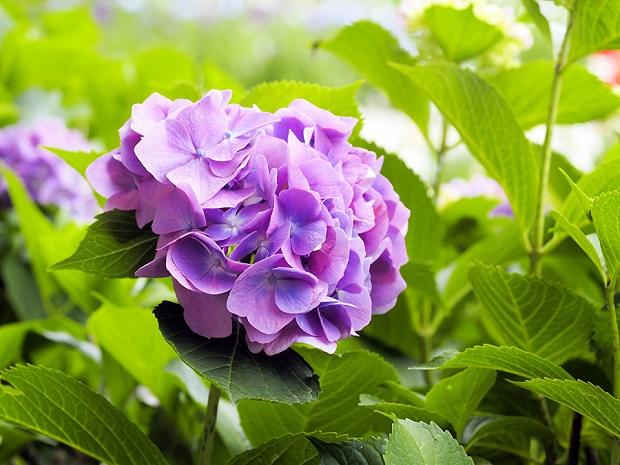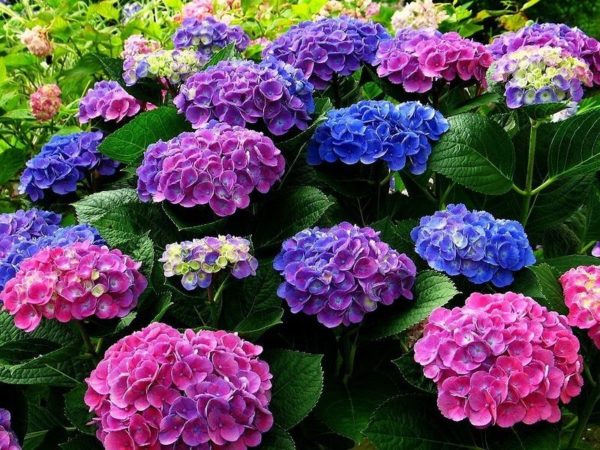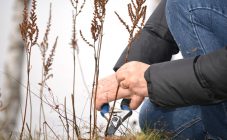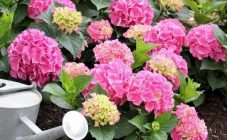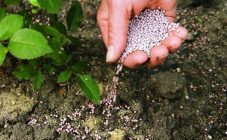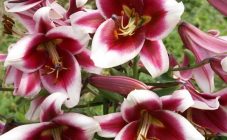Content:
One of the common plants used for garden decoration is hydrangea. An important point in the agricultural technology of any culture is feeding, hydrangea is no exception. It is important for everyone who wants to grow this shrub to know how to feed a hydrangea for abundant growth and flowering.
The key to quality flowering
Hydrangea is a very beautiful flowering plant, and many gardeners love it. Hydrangea combines:
- A large number of large-leaved and small-leaved shrubs;
- Vines;
- Indoor views;
- Tree varieties.
Many are wondering how to fertilize hydrangea for lush flowering, but there is no specific drug. Regular feeding with different formulations should be carried out to ensure that all the necessary nutrients are supplied to the roots.
Among garden hydrangeas, the paniculate species is the most common. The main feature of hydrangeas is their love of moisture; they require a lot of water during their growth. Some believe that hydrangea is an unpretentious crop that does not require additional feeding. But this is a deep misconception, since the plant needs nutrients no less than moisture and care.
Why feed hydrangea
Fertilizing the soil where the hydrangea grows will have a beneficial effect on the growth of shrubs, as well as provide abundant flowering and a beautiful healthy appearance of flowers. In addition to abundant flowering, until the very frost, regular feeding of hydrangeas will help to strengthen the shrubs before cold winters, providing them with strong immunity.
The use of fertilizers throughout the season contributes to:
- achieve abundant flowering throughout the season;
- during the budding period, do not lose inflorescences;
- grow strong beautiful shoots;
- to provide a healthy appearance of shrubs without leaf chlorosis.
Today, many different fertilizer options are on the shelves. If you choose the wrong mineral compositions, then the desired result will not be achieved, on the contrary, shrubs from an excess of some components may die. When choosing a chemical, you should familiarize yourself with how to water hydrangea with it.
Features of feeding
When growing hydrangeas, a comprehensive fertilization method should be used. This is the fastest feeding method. Throughout the season, both mineral and organic compounds must enter the soil. In different periods of the growing season, substances of different composition should be used.
Fertilization in spring
Spring feeding will help ensure beautiful, vibrant foliage as well as lush bloom throughout the season. Its main task is to form strong and healthy leaves.Fertilizers are applied to the soil in March, when sap flow begins after winter.
In order for the leaves to grow actively, you will need to provide them with an abundant amount of nitrogen. The best option in this case would be to use urea and potassium sulfate. In 10 liters of water, 1 tbsp is diluted. l. any of these drugs. 5 liters of the composition are poured onto each bush.
When the plant is preparing to bloom, fertilization will be required, but already of different compositions. Potassium and phosphorus must be present in solutions. The simplest option would be superphosphate, which is diluted with water in a dosage of 1 tbsp before watering. l. 10 liters.
Fertilization in the summer
In order to increase the number of buds on a bush in June, it is important to know how to feed a hydrangea during flowering. It is recommended to feed the bushes with a solution of nitrophoska and Agricola. For 10 liters of water, 1 tbsp is taken. l. of each drug.
The duration of flowering will be provided by top dressing in mid-summer (July-August). You can use a special complex fertilizer, for example, "Flower Kemira". Often, hydrangea watering and fertilization are combined.
Starting from August, nitrogen should not be present in the composition of fertilizers that will be applied for crops. It will have a bad effect on preparing the plant for winter, and will also increase the green mass and weight of the inflorescences. Branches with flowers can simply break under the weight of their mass.
Fertilizing shrubs in autumn
The main tasks of autumn dressing are to prepare shrubs for the coming cold winter, as well as to ensure high-quality laying of young flower stalks and shoots. Here it is important to choose the right way to water the hydrangea. It is best to use potassium-phosphorus formulations, as potassium strengthens the root system.
To perform a similar procedure, dilute 1 tbsp in 10 liters of water. l. potassium sulfate and superphosphate. Pour about 7 liters of a similar solution under each bush. The use of nitrogen fertilizers during this period is unacceptable, since the correct formation of young buds and shoots will not occur.
You can also strengthen the plant in autumn (late September - early October) with organic fertilizers: peat, humus, compost. If you place such compositions around the bushes, with a layer of 5-10 cm, then the hydrangea will receive not only the necessary nutrients, but will also be provided with additional shelter from frost.
Types of fertilizers for hydrangea
There is a huge selection of fertilizers today. All of them can be conditionally divided into three large groups: mineral, organic compounds and folk recipes.
Mineral fertilizers
As mineral dressings, you can use individual substances or use complex formulations. The second option is much easier, since when making them, you do not need to calculate the dosages and proportions of each of the components.
- Fertika for hydrangeas. Available in liquid and granular form. It is a liquid mineral fertilizer for hydrangeas containing a wide range of nutrients and minerals. Submitted every two weeks. The granular preparation is used 1-2 times per season, distributed over the area of the crown projection.
- Pokon brand products are long-term fertilizers. They are distributed in the spring in the root zone, mixing with the soil, and then the bushes are watered.
- A special fertilizer for hydrangeas and rhododendrons is produced under the GreenWold logo. It should be applied once every 3 months, it turns out 1-2 dressings per season.
- You can use traditional fertilizer. In May-June, the bushes are watered with a special solution. One plant requires 2-3 buckets of nutrient composition. Take 60 grams per bucket of water. ammonium sulfate, 15 gr. potassium sulfate and 20 gr. superphosphate. When buds appear, they are watered with another solution prepared from 10 liters of water, 60 gr.superphosphate and 40 gr. potassium sulfate.
Organic fertilizers
Mineral fertilizers based on nitrogen are well alternated with organic ones. For such purposes, you can use:
- a solution of liquid manure with water in a ratio of 1:10;
- infusion of green grass (you need to prepare it in advance);
- biohumus in liquid form;
- infusion of mullein.
In the fall, it is recommended to fertilize the ground with humus, which, in addition to nutrients, will provide additional heat in winter.
Folk recipes
Since ancient times, people have learned to use homemade products as fertilizers. At first glance, these methods seem very unconventional, but hydrangeas are very positive about them. It must be borne in mind how you can fertilize hydrangea, except for chemical compositions:
- Feeding hydrangeas with kefir, yogurt, whey will have a beneficial effect on growth and flowering, the product is pre-diluted with water several times.
- Watering and spraying the bushes with a weak pink solution of potassium permanganate will have a beneficial effect on flowering.
- You can feed the hydrangea with sour bread, which is soaked to a homogeneous gruel.
As you can see, in order to grow a beautiful and blooming hydrangea, it is not enough just to plant it and prune it throughout the season. Without using the correct fertilization scheme, the shrubs will not grow and the flowers will not be large and beautiful. It is clear how to feed hydrangea and when, so you can start choosing a variety and color. But it is worth remembering that frequent watering can harm hydrangeas - bloom (mold) will appear, which will ruin all the beauty.
